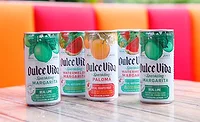Tequila, canned cocktails illuminate spirits category
RTD premixed cocktails generate 48% growth

Image courtesy of SelvaRey
Spring is in the air, which means more at-home experimentation with diverse brown and white spirits, like mixing up a fruity Malibu Sunset, a tart and tangy Margarita or a spirit-forward Old Fashioned or Martini. In the “spirit” of the season, the spirits industry has plenty of reasons to celebrate. For the 12th straight year, the spirits category, driven by premiumization, experienced accelerated growth. Supplier sales rose 12% in 2021 to a total of $35.8 billion, while volumes rose 9.3% to 291.1 million 9-liter cases, according to the Washington, D.C.-based Distilled Spirits Council of the United States (DISCUS).
At the Distilled Spirits Council Annual Economic Briefing on Feb. 3, DISCUS President and CEO Chris Swonger reported that spirits gained market share of the total U.S. beverage alcohol market in 2021, with sales rising 1.7 share points to 41.3%. Spirits growth was supported by hospitality industry recovery, but more help still is needed for restaurants and bars, he noted.
“Last year, enthusiasm for spirits continued as consumers spent more to elevate their cocktail experiences with super-premium brands,” Swonger said in a statement. “Consumers savoring spirits at home and trading up to higher-end brands, combined with the gradual reopening of bars and restaurants, resulted in record sales for the spirits sector. We’re also seeing strong growth for spirits-based ready-to-drink products, and that’s adding to our sector’s gains as well.”
Swonger noted that the premiumization trend, along with innovative COVID-relief measures such as cocktails-to-go, delivery and eCommerce, have helped to boost restaurants, bars and small distilleries as they continue to manage through the uncertainty and volatility created by the lingering pandemic.
Brian Sudano, managing partner for New York-based Beverage Marketing Corporation (BMC), points out that the spirits industry has grown every year since the new millennium began. In 2021, growth was buoyed by RTD premixed cocktails and tequila.
“The momentum for the category accelerated in 2021 with the absolute volume growth estimated by BMC of over 7%,” Sudano explains. “However, on a standard serving basis, growth was essentially consistent with 2020 at 4%. The industry is benefiting from several trends to include variety seeking and the single-serve RTD movement.
“White spirits outgrew brown in 2020 and 2021 as the reduction in on-premise sales benefited the off premise and white spirit cocktails,” he continues. “Within white spirits, tequila and RTD cocktails continue to dominate with tequila growing nearly 20% in 2021 after advancing in the mid-teens in 2020. RTD cocktails have grown near 50% the past two years with overall at-home consumption accelerating. On the brown spirit side, Irish whiskey returned to strong growth in 2021 advancing in the mid-teens range.”
When looking at recent trends, non-alcoholic spirits (up 86%), prepared cocktails (up 48%) and tequila (up 12.4%) were the only categories that experienced growth, says Kaleigh Theriault, manager for beverage alcohol thought leadership at NielsenIQ, Chicago.
Out of all U.S. alcohol beverages — beer, wine and spirits — spirits was the one bright spot even though it only rose 1% in 2021 vs. 2020, Theriault says, citing NielsenIQ Retail Measurement Services for total alcohol sales at liquor store and convenience stores for the 52 weeks ending Feb. 19.
“Non-alcoholic spirits are the smallest segment when looking at overall dollars, but non-alcoholic spirits have accelerated faster than any other segment throughout the past five years, posting 86% growth in the latest 52 weeks,” she explains. “Following behind the non-alcoholic segment in terms of growth is prepared cocktails, which have seen the second-highest growth rates over the past three years and captured an additional $714.5 million in sales during that time. In the latest 52 weeks, the majority of spirits categories saw declines given consumers’ sharp increase in on-premise consumption following increased vaccination rates and eased COVID-19 restrictions.”
Cocktail craze captivates consumers
Capitalizing on the on-the-go convenience of RTD premixed cocktails, several large brands released new offerings for spring and summer.
For instance, Crown Royal, a brand of Diageo plc, expanded its RTD cocktail lineup with the addition of Crown Royal Whisky Lemonade featuring flavors of sweet, tart and fruity whisky with lemon zest and a 7% ABV.
After a successful launch in 14 states in 2020, Jack Daniel’s canned cocktails hit shelves nationwide in March. Made with real Jack Daniel’s Tennessee Whiskey, the 7% ABV RTD cocktails in 12-ounce cans are available in Jack & Cola; Jack, Honey & Lemonade; and Jack Apple Fizz.
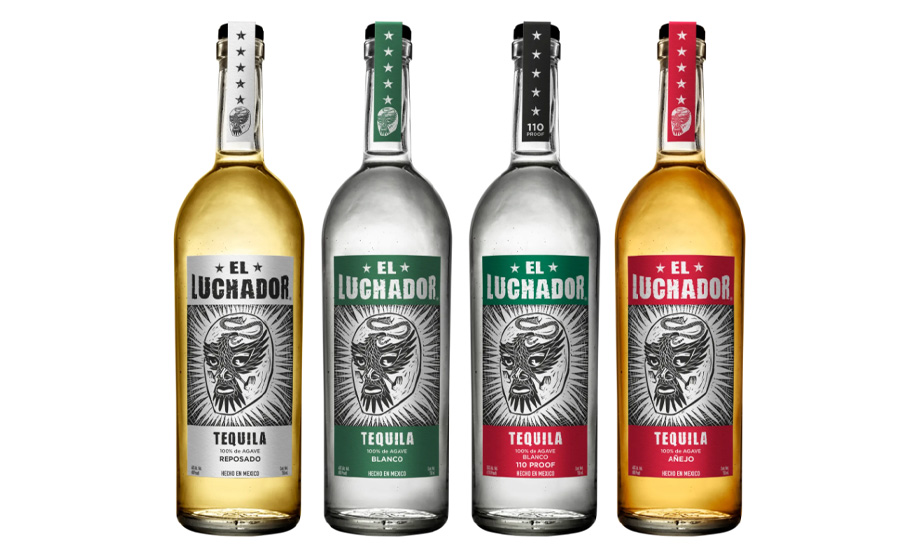
Images courtesy of El Luchador Tequila
Meanwhile, premium RTD alcohol and lifestyle brand Loverboy expanded its craft cocktail line with the retro-classic Cosmopolitan. Loverboy Founder and “Summer House” reality star Kyle Cooke spent over eight months testing and perfecting the formulation of the light, crisp cocktail which includes real, all-natural lime juice, organic blue agave and a splash of real cranberry juice to give the drink its iconic pink shade. Equivalent to two cocktails in each can, the Cosmopolitan boasts 12% ABV, is 95 calories and contains 3.5 grams of sugar in each serving.
With sales of $875 million and growth of nearly 41% in multi-outlets for the 52 weeks ending Jan. 23, premixed cocktails are a bright spot in the spirits category, according to data from Information Resources Inc. (IRI), Chicago.
What’s hot in spirits?
Although RTD premixed cocktails might be a growth driver for the overall spirits market. It is not the only segment generating growth. Tequila grew 8.1% and generated dollar sales of $1 billion, while spirits seltzer centric experienced 162.5% growth and sales of nearly $200 million for the 52 weeks ending Jan. 23. However, the overall spirits category saw only 0.1% growth, totaling $10.58 billion, IRI data reports.
Based on data from market research firms, experts note that tequila soon could overtake vodka as America’s favorite liquor, fueled by consumers’ desire for pricey bottles of agave-based spirits. In fact, agave-based spirits saw sales climb 30.1% compared with the prior year to $5.2 billion, according to DISCUS. Industry experts agree.
“Agave-based spirits are in fact growing very fast,” BMC’s Sudano says. “On a volume basis, over 20% while even greater on a dollar basis. Not all agave spirits are tequila or mezcal. Agave concentrate can be added to any spirit including whiskey. Agave (tequila) is the fastest growing traditional spirit type. However, RTDs still outpace agave beverages.”
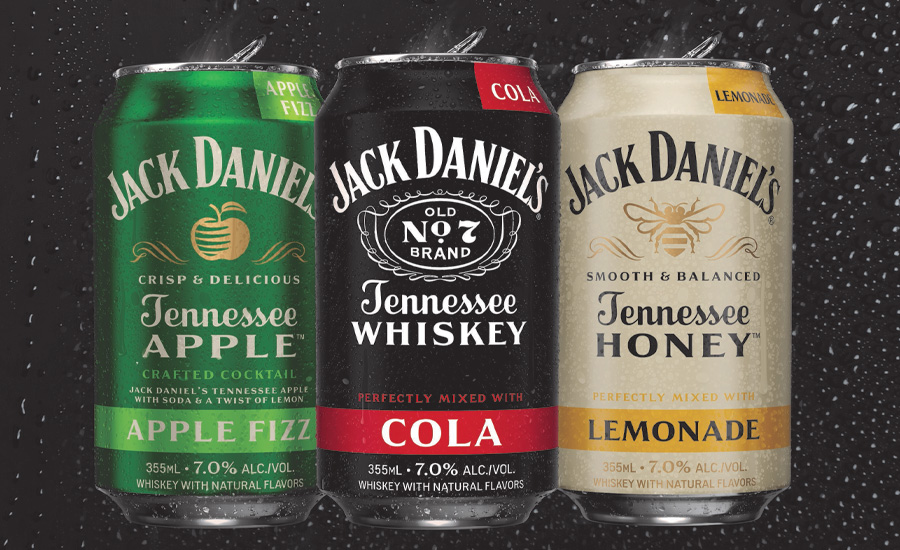
Image courtesy of Jack Daniel’s
Noting tequila’s double-digit 12.4% growth, NielsenIQ’s Theriault notes that within tequila, many types are resonating in the market. “The following segments outshone traditional white/silver and gold/especial offerings — añejo extra, joven, añejo, mezcal and resposado,” she explains. “For ahiskeys, Japanese whiskies are driving strong growth rates, but on a smaller base, while American whiskey and Scotch are also seeing growth.”
Taking inspiration from two of Mexico’s cultural icons — artisanal tequila and the famed lucha libre masked wrestlers — tequilero David Ravandi, founder of the artisanal 123 Organic Tequila portfolio, relaunched El Luchador Tequila in select markets nationwide in March. The collection includes three 40% ABV varietals, El Luchador Blanco Tequila; El Luchador Reposado Tequila; and El Luchador Anejo Tequila; along with the 55% ABV El Luchador Distill-Proof Blanco Tequila.
Also continuing to innovate in a brand new category, The Boston Beer Co.’s Truly Hard Seltzer, in partnership with Beam Suntory, entered the bottled spirits category with the launch of Truly Flavored Vodka, which is inspired by the brand’s most popular hard seltzer styles: Strawberry Lemonade, Wild Berry and Pineapple Mango. Available at select retailers nationwide, the 30% ABV triple-distilled vodka is made with cane sugar, natural flavors and contains 99 calories in each 1.5-ounce serving.
As spirits manufacturers look to add new options, analysis shared in DISCUS’s annual economic briefing highlights where consumers are spending their spirits dollars.
The following are Top 5 spirits categories by revenue:
- Vodka up 4.9% to $7.3 billion
- Tequila/mezcal up 30.1% to $5.2 billion
- American whiskey up 6.7% to $4.6 billion
- Brandy/cognac up 13.1% to $3.5 billion
- Cordials up 15.2% to $2.9 billion
The following are the Top 5 fastest growing spirits categories by revenue:
- Premixed cocktails including spirits-based RTDs up 42.3% to $1.6 billion
- Tequila/mezcal up 30.1% to $5.2 billion
- Irish whiskey up 16.3% to $1.3 billion
- Cordials up 15.2% to $2.9 billion
- Single Malt Scotch up 14.4% to $1 billion
Much of the growth is fueled by the high-end and super premium Irish whiskeys. Additionally, American whiskeys continued to drive overall U.S. spirits exports in 2021. They accounted for 61% of all spirits exports in value terms, and 38% in volume terms in 2021, it adds.
Christine LoCascio, DISCUS chief of public policy, notes that the premiumization trend continues to accelerate.
“Within white spirits, tequila and RTD cocktails continue to dominate with tequila growing nearly 20% in 2021. RTD cocktails have grown near 50% the past two years with overall at home consumption accelerating. On the brown spirit side, Irish whiskey returned to strong growth in 2021 advancing in the mid-teens range.”
- Brian Sudano, managing partner at Beverage Marketing Corporation
“Nearly 82% of the spirits sector’s total revenue increase was from the sale of high-end and super-premium spirits brands,” she explains. “Purchasing luxury spirits to create craft cocktails was a simple pleasure for spirits consumers who hunkered down at home and curtailed spending on vacations and dining out for a second year in a row.”
Supporting this assumption, NielsenIQ’s January report “2021 Year in Review,” notes that off-premise alcohol sales were $88 billion; yet, sales were down $2.5 billion vs. 2020.
Digital influence packs a wallop
Although online alcohol purchases saw explosive triple-digit growth during the pandemic and a 186% increase last January and February, in March 2021, things had quieted down to 27% and decelerated 25% from April through November due to a drop in the number of orders and smaller basket rings, NielsenIQ’s report stated.
Yet, spirit sales on Boston-based Drizly bypassed wine sales for the first time since 2020 and continued into 2021, says Liz Paquette, Drizy’s head of consumer insights.
“The liquor category gained three percentage points of total share in Drizly in 2021. Spirits accounted for a 44% share of all Drizly sales in 2021, while wine’s share declined one percentage point year-over-year to 38% and beer dipped two percentage points to 16% share,” she says. “In 2022 to date on Drizly, the top-selling spirits are a mix of brown and white spirits: vodka, bourbon, Scotch whisky, silver/blanco tequila and reposado tequila.
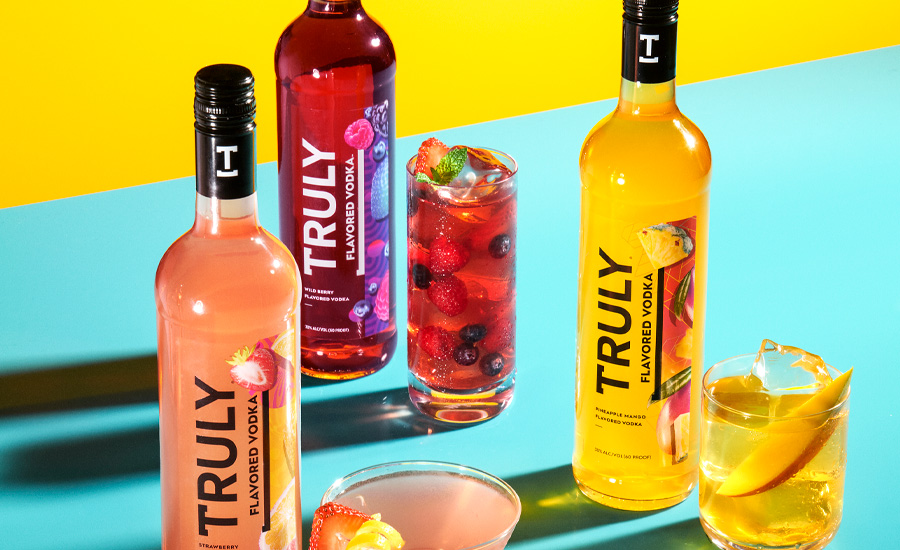
Image courtesy of The Boston Beer Co./Beam Suntory
“Tequila has been steadily growing year-over-year with silver/blanco tequila increasing by 15% of share in the liquor category since 2019 on Drizly, and reposado and añejo growing 96% and 28%, respectively. Vodka currently accounts for a 19% share of the liquor category on Drizly, showing a significant decline from 30% share in 2019,” Paquette says. “Tequila continued its growth spurt in 2021 on Drizly and the trend is likely to accelerate throughout 2022. In fact, 80% of respondents in Drizly’s annual retailer survey stated that they plan to carry more tequila in 2022. Tequila saw a 13% increase in share year-over-year in 2021 on Drizly and now commands an 18% share of the liquor category specifically.”
She notes that celebrity brands have fostered greater awareness, citing the top celebrity-owned tequila brands on Drizly as Casamigos, Teremana, Codigo 1530, 818 and DeLeon. “They’ve helped to bring mainstream popularity to the category, with Casamigos [co-founded by actor George Clooney] and Teremana [co-founded by Dwayne ‘The Rock’ Johnson] both ranking in the Top 10 best-selling tequila brands on Drizly overall,” Paquette says.
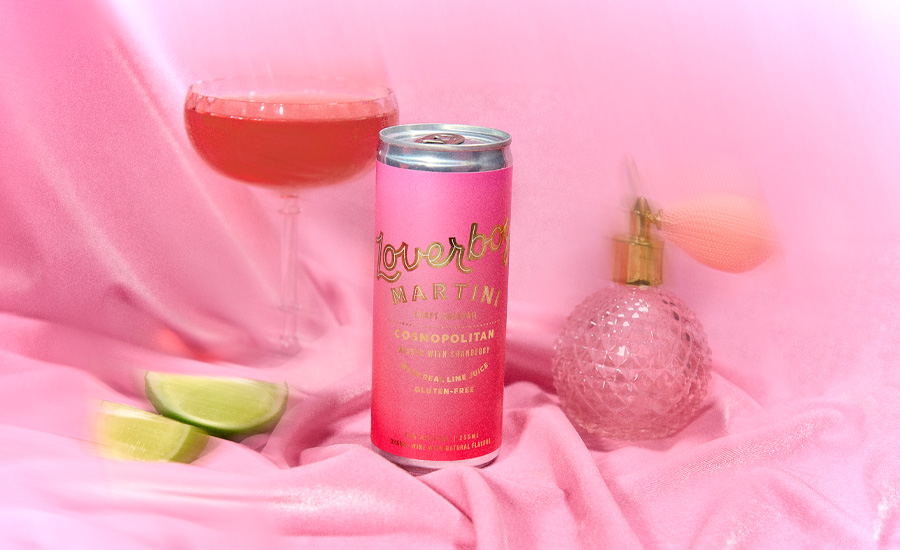
Image courtesy of Loverboy
Launched in 2021 and backed by the award-winning co-owner Bruno Mars, the Panamanian-produced, single estate SelvaRey rum features four sippable varietals: the 40% ABV White Rum; the 35% ABV Chocolate Rum; the 30% ABV Coconut Rum; and the top shelf 40% ABV Owner’s Reserve, which is aged between 15 and 25 years and has tasting notes of pears flambé, baking spice, dried apricot and baked apple, the company says.
Celebrity influence aside, in its “Global Alcoholic Beverage E-Commerce Platform Market” report, InsightAce Analytic Pvt. Ltd. reports that the global alcohol beverage eCommerce market was valued at $2.19 billion in 2021, and it predicts the market to reach $30.5 billion in 2030 at a compound annual growth rate of 34.3% from 2022 to 2030.
As we move into 2022, experts expect total spirits sales to return to pre-COVID levels and for consumers to maintain their preference for better-for-you options like non-alcohol and ready-to-drink spirits.
“Younger consumers continue to gravitate toward spirits. Generally speaking, spirits are viewed as more versatile, premium and lower in calories and carbohydrates,” BMC’s Sudano says. “With trends toward health and wellness only strengthening, spirits are well-positioned to lead beverage alcohol growth for the next 10 years.”
Looking for a reprint of this article?
From high-res PDFs to custom plaques, order your copy today!





